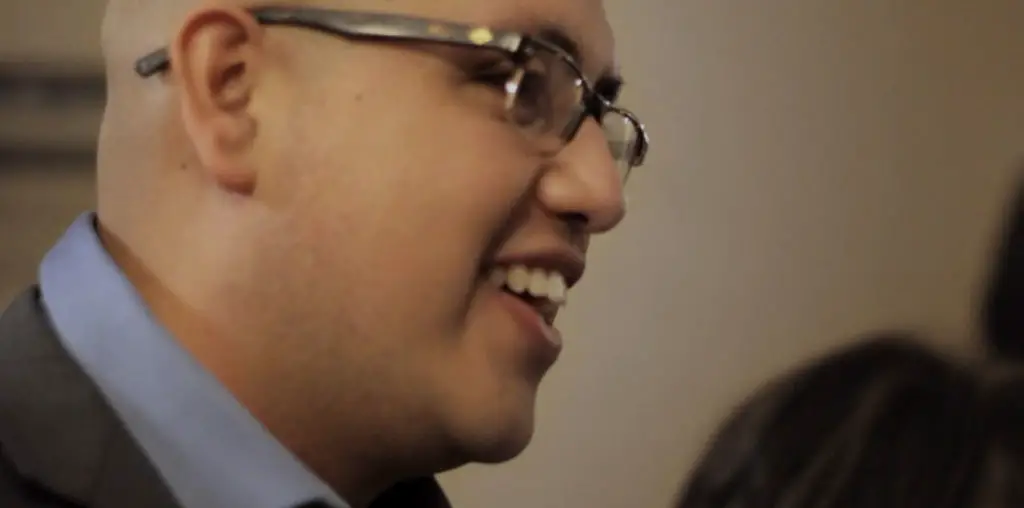
The phrase “tall, dark, and handsome” has become a bit of a cliché, but it’s more or less still an effective one. There’s something about those three words put in that order which evokes images of mystery and intrigue. John (Christopher Brown), the male lead in “Orphans and Angels,” is tall, dark, and handsome. The film is about the dangerous intersection of lust, trust, disbelief, and deceit. The first few glimpses of John that the film offers includes him walking down a crowded street, sitting in a bar, and emerging from dark crevices of an ally in order to chat up a redhead named Theresa (Emmeline Hawthorne). Along with the female lead, the viewer learns fragments of information regarding John’s past, and much of the mystery shrouded around him begins to dissipate. Neither you nor Theresa’s friend Kim (Cal Wilson) will doubt that John is nothing more than a drug-dealer who’s capable of murder. Unfortunately, love-struck Theresa begs to differ.
Although the viewer is initially drawn to Mr. Tall, Dark, and Handsome, the appeal of his nocturnal entrance inevitably shatters. After all, he is a cliché—a not-so-well-dressed one either. Night hours hide the texture and color of his clothes, but daylight isn’t as accommodating. What appears to be a cool, black, trench coat is actually a wrinkly, brownish-gray leather raincoat. In truth, then, John’s only deceptively tall, dark, and handsome. You lose interest in him as soon as you find out about his drug-pushing activities, which is an example of the film’s weakness. Aside from one of the characters that ends up dying in the film, you never really “like” or empathize with anyone enough to care if they live or die. There might be an obligation to wish that Theresa would quickly come to her senses, but this desire is more the result of her being the protagonist as opposed to genuine adoration on the viewer’s behalf. “Orphans and Angels” is like a performance art piece. Beautifully lit and photographed, the film is more an expression of human weakness than cinematic genius. Faults within the making or developing of the film’s structure or narrative are a reflection of its characters.
Disagree with this review? Think you can write a better one? Go right ahead in Film Threat’s BACK TALK section! Click here>>>
